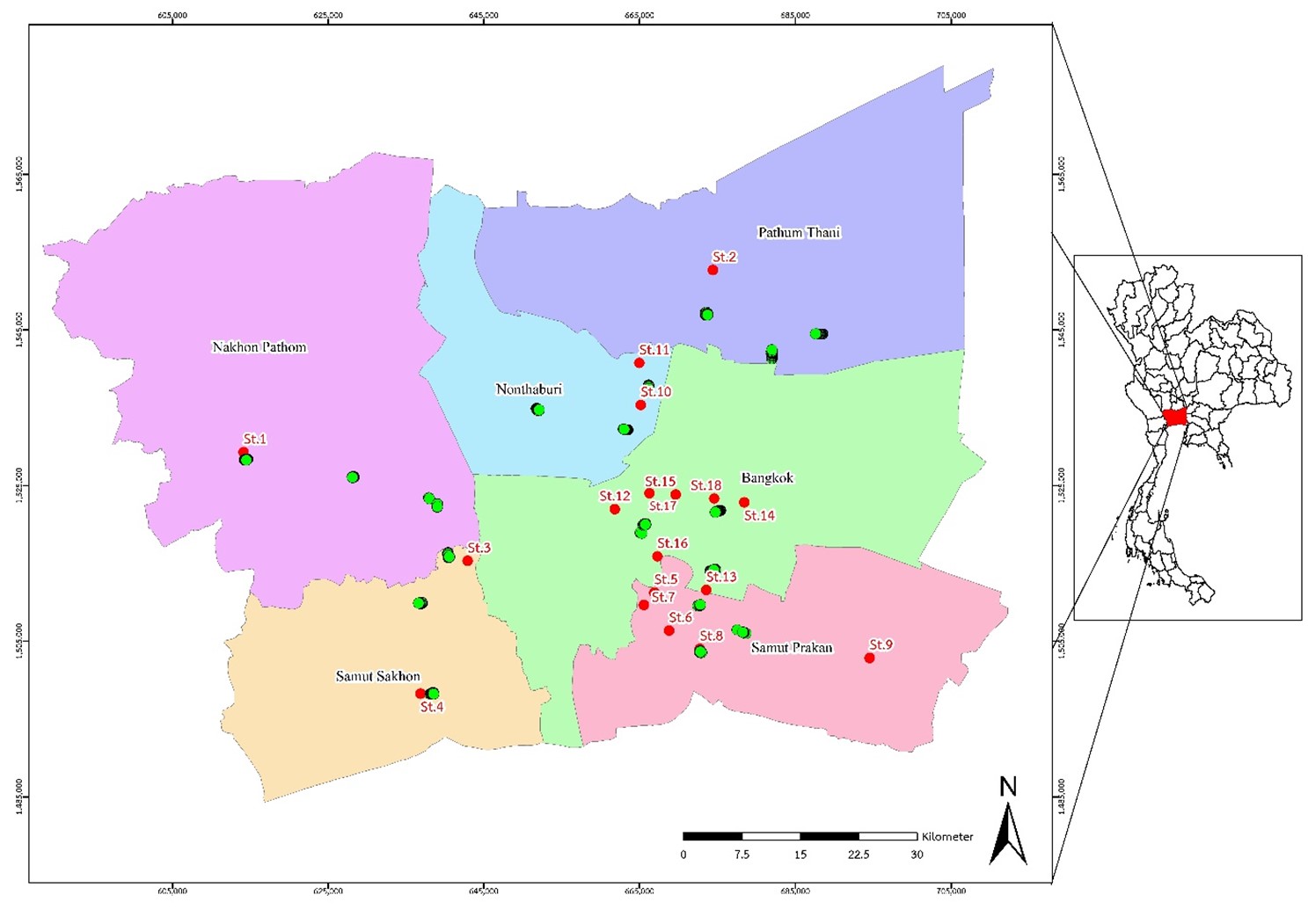Meteorological Conditions and PM2.5 Impact on COVID-19 Case Fatality Ratios (CFR) in Bangkok Metropolitan Region
Main Article Content
Abstract
The emergence of a novel coronavirus strain triggered a global health crisis, impacting both health and economies worldwide, including Thailand since 2019. While prior research hinted at connections between environmental factors and rising COVID-19 cases, these links remained inconclusive. This study investigated indoor and outdoor (I/O) ratios and explored potential correlations between fine particulate matter (PM2.5), meteorological conditions, and the case fatality rate (CFR%) of COVID-19 in Bangkok and its metropolitan area from January to December 2021. In Spearman’s Rank correlation analysis, the results found that CFR% exhibited a positive correlation with relative humidity (RH) (r=0.187) and a negative correlation with PM2.5 (r=-0.190) and wind speed (WS) (r=-0.039). The generalized additive model (GAM) indicated that RH, PM2.5, temperature, and WS adversely affect the CFR% of COVID-19. Consistent relationships between PM2.5, RH, and WS were observed in both Spearman’s Rank correlation and the GAM model. This study underscored the complexity of understanding pandemic dynamics across seasons, I/O ratios, and the influence of lag days. By presenting the results, they may serve as a valuable reference for planning interventions during future pandemics.
Article Details

This work is licensed under a Creative Commons Attribution-NonCommercial 4.0 International License.
Published articles are under the copyright of the Applied Environmental Research effective when the article is accepted for publication thus granting Applied Environmental Research all rights for the work so that both parties may be protected from the consequences of unauthorized use. Partially or totally publication of an article elsewhere is possible only after the consent from the editors.

